I’m a Latina dietitian, and something I hear from my clients every day is they don’t feel like there are a lot of Mexican vegetables for them to choose from.
But I’ve found the opposite to be true, Mexican food has plenty of vegetables! Tomato, avocado, peppers, onion, squash, and cactus are all traditional Mexican vegetables, among others.
That’s why I created this guide–to help my Mexican and Mexican-American clients brainstorm vegetables they can include in their favorite Mexican meals. (But any Mexican-food-lovers out there should feel free to use this list, too!)
If you love Mexican food and want to incorporate more vegetables into your diet, this guide is for you! You’ll learn about some common Mexican veggies, along with their benefits and my favorite recipes using those vegetables.
(This post was originally published in February 2023, and was most recently updated in March 2024).
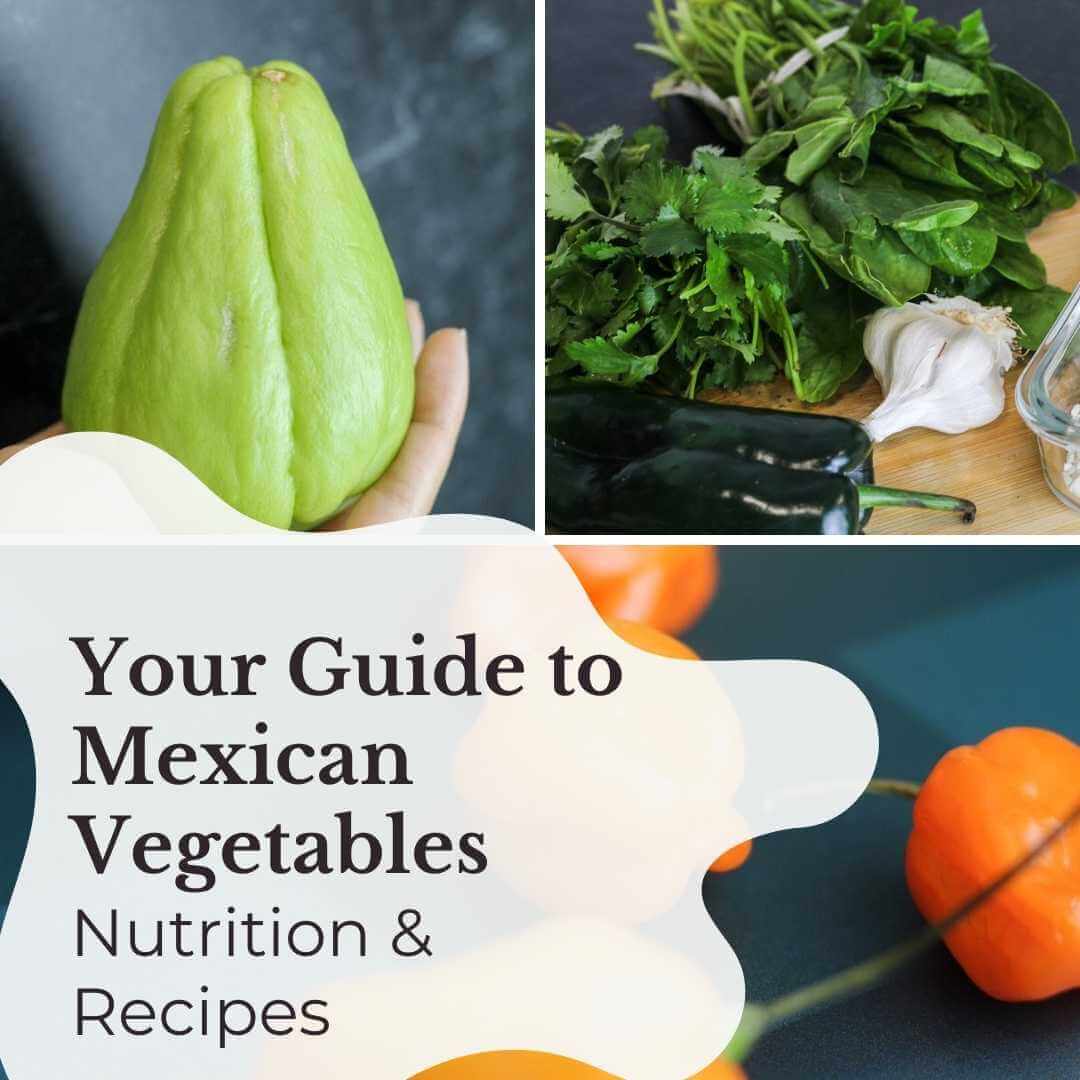
Avocado
Avocados are native to South Central Mexico, and have been a staple of Mexican and Latin American diets for thousands of years.
Avocado is easy to add to meals! It’s easy to add sliced avocado on top of tacos, tostadas, eggs, or soup, for example.
Avocado can also be used in salsa or of course to make guacamole, making it easy to add to snacks.

Nutrition
Avocado is a unique vegetable because it is very rich in heart-healthy fats, thanks to its creamy texture (1). These heart-healthy fats may be why avocado intake is associated with a lower risk of heart disease (2).
Because they contain both fiber and fat, avocados are especially filling and can help address cravings and appetite. One study showed participants who added avocado to breakfast reported feeling less hungry afterward and had a lower insulin response (3).
Mexican Avocado Recipe
Try this classic guacamole recipe for an easy way to add avocado to your celebration.
Beets
Okay you may not automatically think beets when I say Mexican food, but they’re actually quite common in Mexican cuisine!
Mexican food mostly uses beets for salads, especially around Christmastime. But beet juice is also a popular drink and remedy!
Nutrition
The popularity of beets in Mexican food may be for good reason. Beet juice has been associated with lower blood pressure (4).
Researchers are also looking into the potential benefits of beet juice for athletic performance, but more research is needed (5).
Mexican Beet Recipe
Want to check out the benefits of beets for yourself? Try this jugo de vampiro (vampire juice) recipe.
Bell Peppers
Bell peppers are a foundational ingredient in Mexican food. They are mostly used to flavor dishes like rice, stew, and meat. You can also find bell peppers heavily featured in dishes like fajitas.
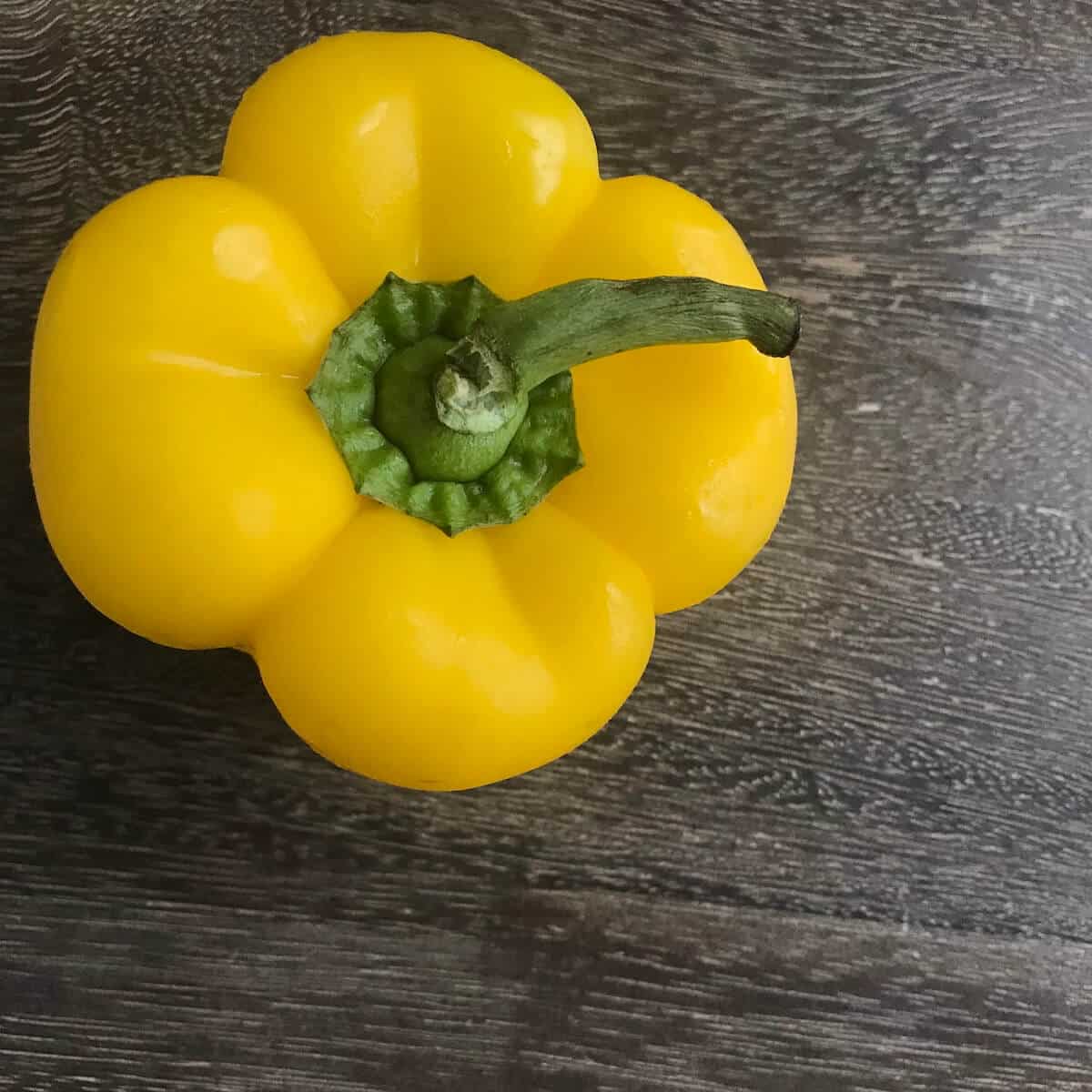
Nutrition
Not only convenient and tasty, bell peppers are rich in vitamin C, as well as vitamin K and vitamin B6 (#).
It’s also worth noting that different colors of bell peppers will have different antioxidant benefits. To get the most antioxidant action from your bell peppers, use different colors of bell peppers in your recipes.
Orange bell peppers are highest in beta-carotene, while green bell peppers provide the most vitamin C, and red bell peppers have the most lycopene (#).
Mexican Bell Pepper Recipe
The easiest way to incorporate a variety of colored bell peppers for maximum antioxidant benefits is to make fajitas!
Cabbage
Cabbage is one of those vegetables that is so important in Mexican food, but rarely gets acknowledged for some reason!
Shredded cabbage is a common garnish for Mexican soups and stews, as well as foods like tostadas or enchiladas. It’s an easy way to add a bit of extra vegetable and crunch to whatever dish you’re eating.

Nutrition
This is great because cabbage is one of those vegetable powerhouses called cruciferous vegetables. Cruciferous vegetables like cabbage, kale, and broccoli may be protective against multiple forms of cancer (6, 7, 8, 9).
Mexican cabbage recipe
You can simply add shredded cabbage to your favorite main dish, or you can try this simple cabbage side salad.
Carrots
Mexican food uses carrots mostly in soups and stews, but it can also be found in salads.
Pickled carrots are also a useful garnish for tortas and tostadas!
Nutrition
Carrots are rich in beta-carotene, which can help promote eye health and protect skin against damage (10, 11).
Mexican Carrot Recipe
These Mexican pickled carrots are the perfect addition to a chicken torta.
Chiles
Chiles have been an important ingredient in Mexican cuisine for thousands of years, dating back to Aztec and Maya civilizations. They were valued not only for their flavor but also for their medicinal properties.
Today, chiles remain a fundamental part of Mexican cuisine, adding heat, depth of flavor, and cultural significance to many traditional dishes.
The signature heat of chiles has a deep importance in Mexican food. In fact, going without it was considered a form of penance in indigenous Mexican religion.

Nutrition
It’s easy to forget that chiles are vegetables but they are! Most chiles are a good source of vitamins A and C (#) . But what makes chiles so unique is the capsaicin.
Capsaicin is the compound in chiles that makes them spicy. The hotter the pepper, the more capsaicin!
Capsaicin has been associated with benefits for heart health, gut health, and pain relief (12, 13). But it’s important to exercise caution and not go beyond your own spiciness tolerance.
Eating too much capsaicin can come with unpleasant side effects like nausea, vomiting, and skin irritation.
There are countless varieties of chile, but here are some of the most popular in Mexican food:
Jalapeño
Jalapeños are an icon of Mexican cuisine. They’re commonly found in salsas, but you may also see a grilled or pickled jalapeño served as a side dish.
Habanero
Habanero peppers are among the hottest chili peppers in the world. They are widely used in in the Yucatan region of Mexico for their fruity flavor and intense spiciness.
Poblano
Poblano peppers are one of the more mild peppers used in Mexican cuisine. Because they’re more mild, it’s more common to see poblanos served as the main component of a dish. You’ll see this in dishes like chiles rellenos or in rajas (roasted poblano strips).
Cucumber
Cucumbers are a refreshing addition to Mexican cuisine. They are commonly used in salads or topped with lime and chile in a fruit cup. Cucumber is also a popular flavor for aguas frescas and juices.

Nutrition
It makes sense that cucumbers are used in salads and drinks, since they’re almost 95% water (14). This can make cucumbers a good way to help with hydration and cool down.
Cucumbers are also rich in nutrients such as vitamin K, which is important for blood clotting and bone health (15, 16).
Mexican Cucumber Recipes
My cacahuates locos recipe pairs cucumber with peanuts, jicama, and plenty of hot sauce for a spicy, refreshing snack.
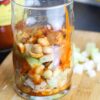
You can also try this refreshing cucumber agua fresca recipe.
Garlic
While garlic isn’t native to Mexico, it has earned an important spot in Mexican cuisine!
You’ll find garlic mostly as a flavor in soups, stews, rice, and more. So while it may not be immediately visible, garlic is all over Mexican food.

Nutrition
Garlic has garnered a lot of attention for its health benefits!
Garlic is also commonly used in Mexican traditional medicine.
And for good reason! Recent studies suggest garlic may have anti-microbial and anti-oxidant benefits (#, #).
Garlic may also help lower cholesterol (#).
Mexican Garlic Recipe
Try this camarones al mojo de ajo for an easy garlic shrimp recipe.
Green Beans
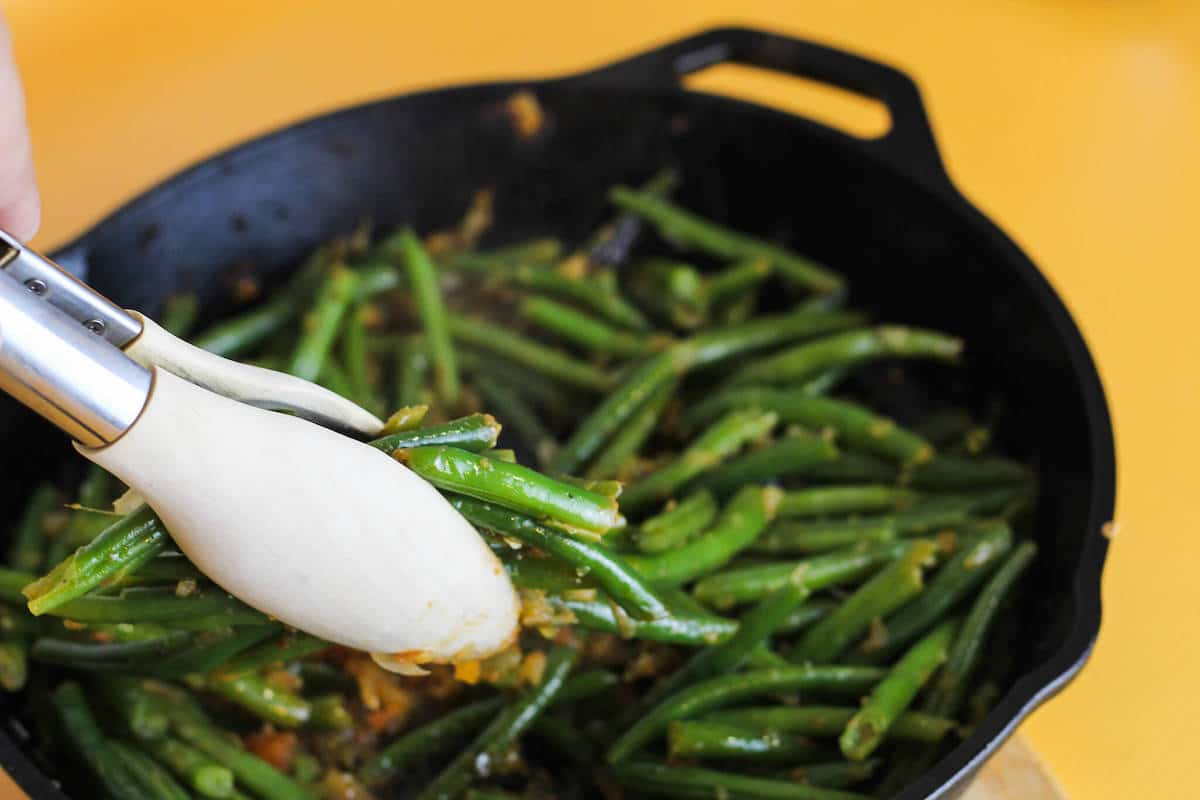
You may not immediately think green beans when you think about Mexican food, but there are plenty of Mexican recipes that use green beans (or “ejotes”).
Mexican food uses green beans as a side dish, but you may also see them as a pickled vegetable, or in soups. Another favorite way to use green beans in Mexico food is to include it in Mexican rice.
Nutrition
Green beans are a very nutritious choice!
1 cup of green beans provides about 10% of your daily folate requirements, 25% of your daily vitamin C, and 15% of your daily vitamin A (#).
People watching their blood pressure may need to watch out for sodium if they choose canned beans. Fresh and frozen good beans would be a good option, as well as no-salt added canned green beans.
Mexican Green Beans Recipes
An ideal weeknight veggie, these Mexican green beans are easy to prepare and flavorful.

Jicama
Jicama is another refreshing vegetable used in Mexican cuisine. It’s native to Mexico and Central America, and is known for it’s crisp texture and mildly sweet flavor.
Jicama is most often used in salads or served with lime and chile as a snack. You’ll also find it in slaws or used as a garnish.

Nutrition
Not just crunchy and refreshing, jicama is also a good source of fiber, potassium, and vitamin C (17).
Mexican Jicama Recipe
Try this refreshing jicama slaw on top of your fish tacos.
Huitlacoche
Some may debate whether this corn fungus counts as a vegetable, but I say if mushrooms count so does huitlacoche!
Huitlacoche can be used similarly to mushrooms, making it a great filling for tacos or quesadillas. It’s also available canned, if you’re not sure where to buy it fresh.

Nutrition
Huitlacoche (sometimes spelled “cuitlacoche”) has similar nutrition benefits to other mushrooms, providing a good amount of magnesium and antioxidants (18).
Additionally, huitlacoche is high in beta-glucans. Beta-glucans are a type of carbohydrate found in the cell walls of fungus. They are currently being studied for potential benefits for the immune system and cholesterol (19, 20).
Mexican Huitlacoche Recipe
An easy way to add huitlacoche into your diet is in quesadillas! Try this easy huitlacoche quesadilla recipe.
Mushrooms
The more common white button mushroom is also very popular in Mexican food. You’re most likely to see mushrooms in a soup or added as a filling to quesadillas, etc.
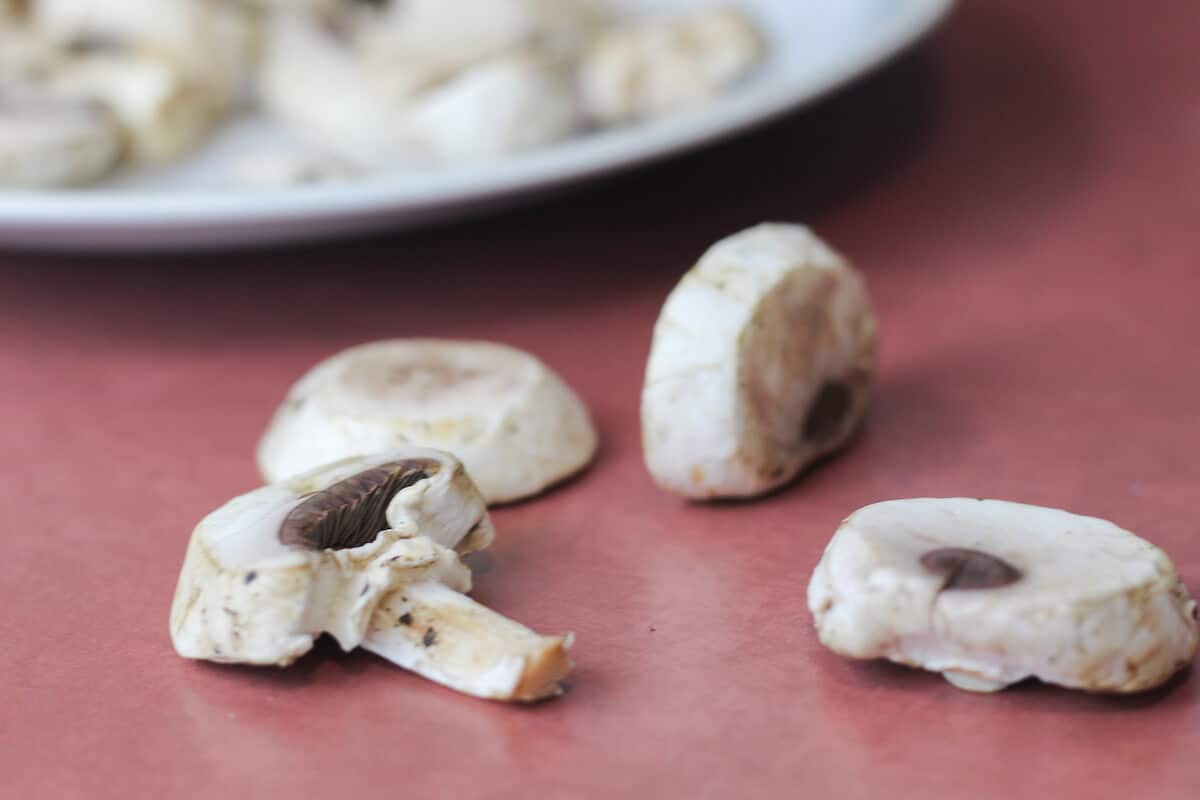
Nutrition
Like huitlacoche, white mushrooms are rich in beta-glucans, which may be associated with improved immune function (21). They are also high in potassium and vitamins B2 and B5 (22).
Mexican Mushroom Recipe
This mushroom recipe is great as a side dish or a filling for tacos or quesadillas.
Nopales
Nopales are the green pads of the prickly pear cactus. They are commonly eaten as a green vegetable in Mexican cuisine. You may seem the cut into strips and sauteed with eggs, served raw in a salad, or grilled.
Nopal juice and smoothies are also very popular. These drinks are often used as home remedies or health tonics in Mexican culture.

Nutrition
The tangy vegetable is very nutritious, providing good amounts of vitamin C and Potassium (23).
Nopal may also have some blood-sugar lowering benefits, which makes it a popular food for Latinos with diabetes (24). More research is needed in this area, however.
The sticky mucilage in nopal (similar to okra) might be what makes it so healthy! Early evidence suggests it may help lower cholesterol (25).
For more information on the health benefits of nopales, check out my blog post: Why You Should Eat Cactus: 6 Powerful Benefits of Nopales
Mexican nopal recipes
Nopales are an easy vegetable to add into your routine. You can use canned nopales to make a simple salad, or combine it with cucumber and pineapple for a refreshing smoothie!


Onion
Onions may seem basic, but they are very versatile. They can be found in Mexican food as a flavor for main dishes or salsas. They are also enjoyed as a garnish for foods like tacos and pozole. Young spring onions, or cebollitas, are also often grilled and served as a side dish.

Nutrition
Because they’re so common, it’s easy to forget how nutritious onions are! Onions are a good source of vitamin C and potassium (26).
Onions are also a good source of quercetin, an antioxidant that may help lower blood pressure (27).
Mexican Onion Recipe
Any recipe that ends with “a la mexicana” features onions!
But while you may already cook with onions, try making them their own dish using this easy grilled cebollitas recipe.
Peas
In Mexican food, you’ll mostly find peas as an ingredient in recipes for soups and meat dishes. But the peas in arroz con pollo and Mexican rice are iconic, so they shouldn’t be left out of our conversation about Mexican vegetables!

Nutrition
It may surprise you that peas are a pretty good source of protein, with 1 cup providing almost 8 grams of protein (#)! Of course they don’t have as much protein as meat, but peas are one of the higher protein vegetables you can eat. This is because they’re technically a legume.
Mexican peas recipes
Arroz con pollo wouldn’t be the same without the green peas!
Quelites
It’s a misonception that Mexican food doesn’t feature many greens. In addition to the basics like spinach and lettuce, Mexican food uses a whole family of greens called quelites.
Quelites are not actually one vegetable. “Quelites” can refer to a variety of different wild greens, including watercress, purslane, lamb’s quarters, and epazote.
These greens are often used in dishes such as soups, stews, and quesadillas.
Nutrition
The nutrition content may vary somewhat because there are so many varieties of quelites. But in general, most quelites will have vitamins C, K, and plenty of antioxidants.
Because of the high antioxidant content, quelites may help protect against cancer and support immune function (28).
Let’s look a little more closely at the health benefits of a few different varieties of quelites. (Note: I talk a little more in depth about papalo and epazote in my article on Mexican herbs).
Chaya
Chaya, also called Mexican tree spinach, has been making a splash in the world of nutrition research!
One study demonstrated adding chaya to a tamal lowered the glycemic index of the tamal (#). This means eating a tamal with chaya results in a lower blood sugar response than eating a plain tamal.
In another study, participants who drank a chaya beverage saw lowered triglycerides and higher antioxidants after 6 weeks (#).
Watercress

Watercress is another popular quelite. Called berro in Spanish, you may see watercress in a salad or a soup.
Watercress is technically a cruciferous vegetable. Cruciferous vegetables like watercress and cabbage may be associated with lower risk of cancer and heart disease (#, #). Watercress is also an excellent source of vitamin K and vitamin A (#).
Try this warming sopa de crema de berro (cream of watercress soup).
Verdolagas (purslane)
Verdolagas are a very popular Mexican green! You’re most likely to find verdolagas stewed with pork in a green sauce.
Purslane is a good source of iron, calcium, potassium, and vitamin C (#). It’s also surprisingly high in omega-3 fatty acids compared to other vegetables.
Huauzontles
The most popular way to serve huauzontles in Mexican food is tortitas de huauzontle, a type of fritter with huauzontles and cheese, served with salsa.
One study evaluated fermented huauzontles (a pre-Hispanic food) and found possible anti-depressive benefits (#).
Radish
Radishes are not unique to Mexican food, but they’re easy to find at a Mexican table!
Radishes are mostly served as a garnish, with thinly sliced radishes topping pozole or tostadas, for example.

Nutrition
Because they’re usually a garnish it’s easy to forget they offer some nutritional value! Radishes can be a good source of vitamin C and folate (29).
Radish peels get their color from anthocyanins, which are antioxidants associated with reduced inflammation and improved brain function (30).
Squash
Did you know squashes are native to the Americas? Indigenous people in Mexico and Central America, including the Maya, Aztec, and Inca, used squash for a variety of purposes.
The flesh and seeds provided food, the tough outer shell could be a container, and the squash flowers were used in traditional medicine.
It makes sense, then, that squashes are still an important vegetable source in Mexican food.
There are a wide variety of squash varieties in Mexican food, but here are three of the most popular varieties:
Calabacita/zucchini
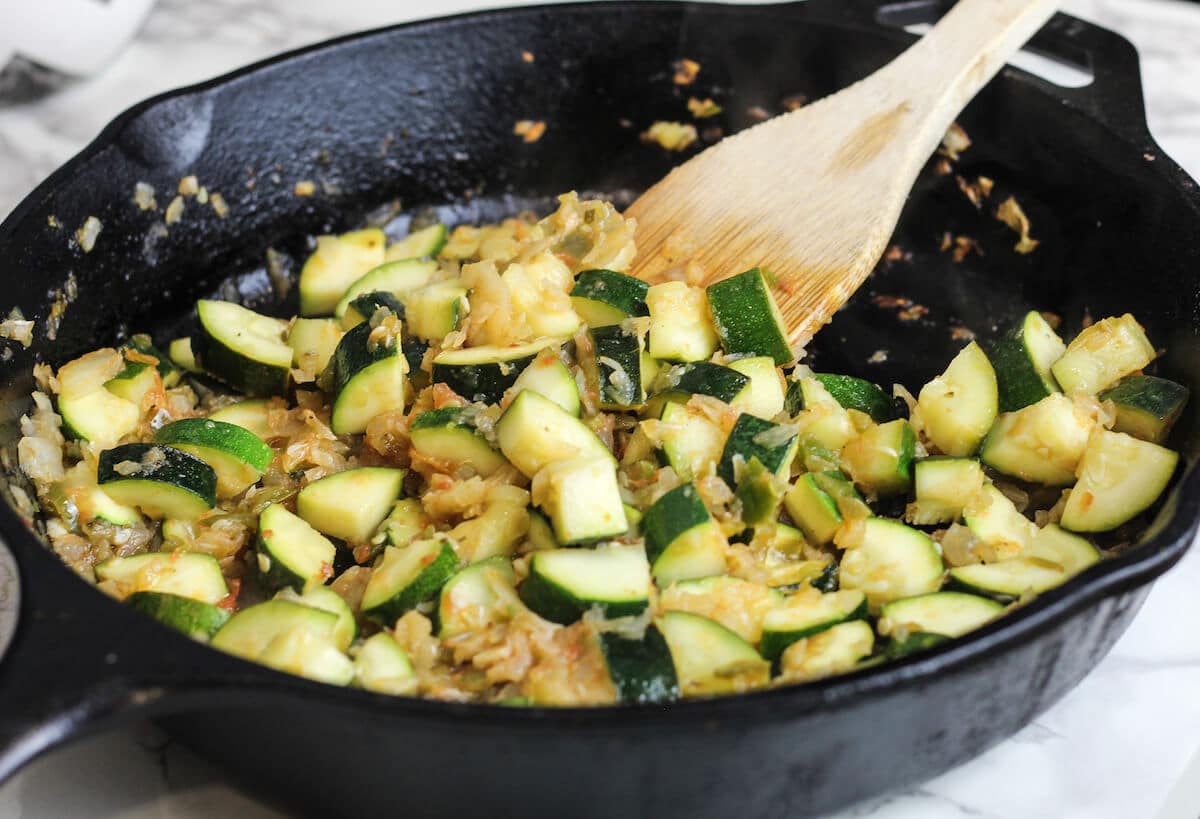
Mexican squash, often called calabacita, is nearly identical to zucchini. One major difference is the color of the skin, which is more of a mottled light green color.
For this reason you can use zucchini and calabacita in the same ways. They both work great as a side dish or a plant-based filling for fajitas and tacos.
Zucchini is rich in vitamins K and C, as well as potassium (31).
Zucchini is also a good source of lutein, an important antioxidant for eye health (32).
My simple calabacitas recipe belongs next to all of your favorite Mexican dishes.
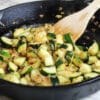
Flor de calabaza (squash blossom)
The flower of the zucchini plant, squash blossoms are a seasonal treat you’ll find in the spring! The easiest way to incorporate flor de calabaza is to use it as a filling for quesadillas like in this recipe.
Squash blossoms are a good source of folate, potassium, and beta-carotene (#). In addition, a recent study found that squash blossoms are especially high in rutin (#). Rutin is an antioxidant which may help protect against neurological diseases, and (#).
(P.S. Flor de calabaza isn’t the only edible flower you’ll find in Latin American food! Check out my article on loroco).
Chayote

Chayote is another type of squash that’s used frequently in Mexican food, but less known in the United States.
Like zucchini, chayote is rich in vitamin C, vitamin K, and potassium (33). Chayote is also especially high in folate. This is important for DNA synthesis and healthy fetal development, and can help prevent certain cancers (34, 35).
You may find chayote serve in salads, or sauteed as a simple side dish. My favorite way to serve chayote is in a soup.
Pumpkin
Yes, pumpkins are originally Mexican!
In fact, one of the oldest known sweets in Latin America is candied pumpkin. We still see remnants of this dish in classic desserts like calabaza en tacha.
You may also find pumpkin featured in soups, stews, etc.
And pumpkins are well-deserving of their place in Mexican cuisine. Not only are they tasty, they may be especially healthy for your skin! Pumpkins are rich in vitamins C and A, which both promote healthy skin by helping you build collagen and preventing UV damage (36, 37).
Tomato
Tomatoes are one of the most important ingredients in Mexican food! Just think about how much sauces are used in Mexican food, and how many of those sauces use tomato.
Tomatoes are native to South America. They became a critical component of Mexican food because of how well they paired with the spicy chile. To this day, you’ll still find tomato and chile paired together quite often.
Salsa and pico de gallo are two of the most popular ways to serve tomato. This makes it so easy to add a few spoonfuls of tomato to almost any Mexican meal.
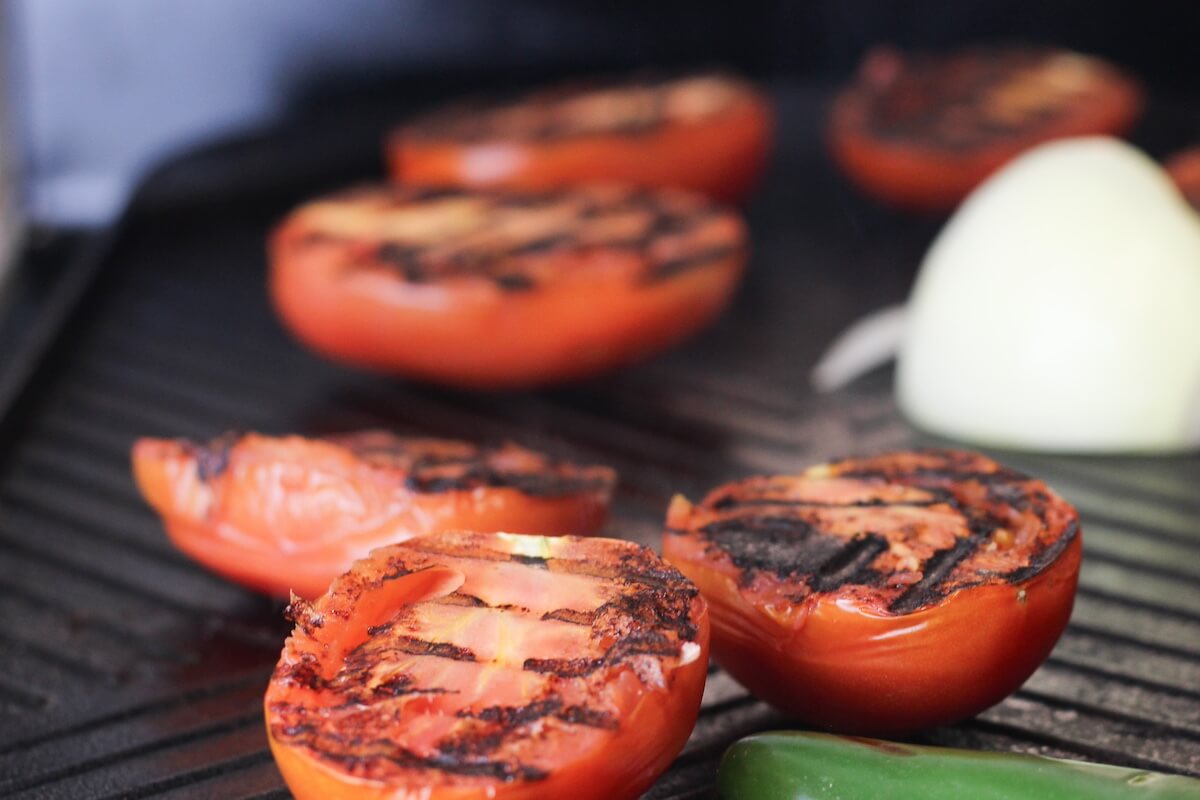
Nutrition
Adding tomato to meals is a great way to add some extra flavor and nutrients. Tomatoes are rich in lycopene. Lycopene is a powerful antioxidant that may help protect against cancer, prevent sun damage, and lower bad cholesterol (38, 39).
Mexican Tomato Recipes
There are almost too many Mexican tomato recipes to choose from!
The simplest way to start adding tomato to your meals is my favorite salsa ranchera.

Tomatillo
While used similarly to tomatoes, tomatillos are technically different plants and have their own unique flavor.
Tomatillos are native to Mexico, and pre-date the tomato in Mexican food. After tomatoes were introduced from South America, native Mexicans noted the similarities between tomatillo and tomato. They began to use the tomato in a similar way to tomatillo, primarily in sauces.
Tomatillos are typically green, and more tart and tangy than a tomato. They also come in a distinctive papery husk.
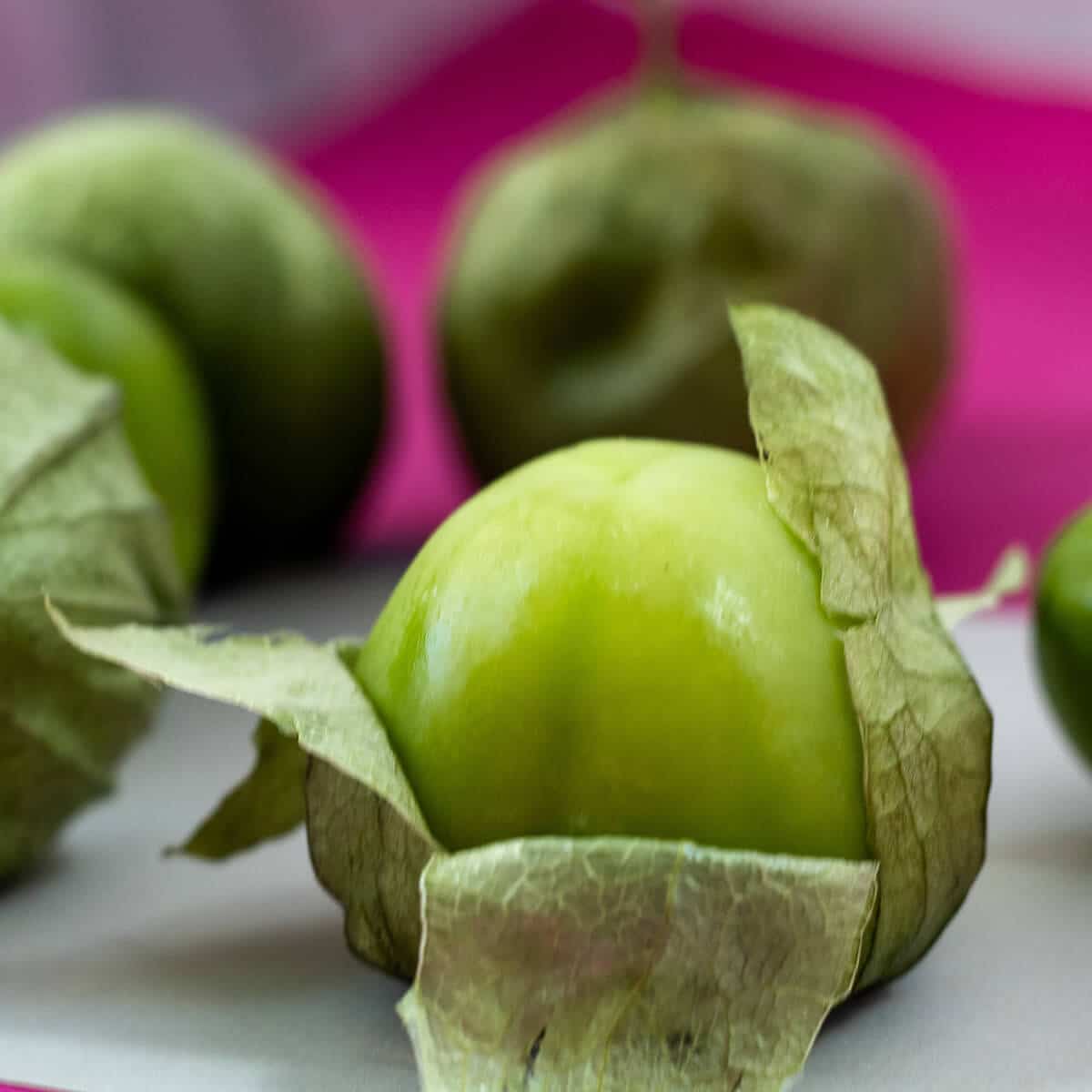
Nutrition
Tomatillos are a good source of fiber, vitamin C, vitamin K, niacin, potassium, and manganese (40). The high vitamin C content of tomatillos may support a healthy immune system and skin health. They also contain antioxidants like flavonoids which may help fight inflammation (41).
Mexican Tomatillo Recipe
Like tomato, the simplest way to add tomatillo to your meals is with an easy tomatillo salsa.
Conclusion
One of the best things you can do for your health is to eat plenty of vegetables, and a wide variety of them (42, 43).
I often hear from my Latino clients that they feel like there aren’t many Mexican vegetables for them to choose from.
But as we’ve seen in this article, this is a misconception! There is a wide variety of delicious Mexican vegetables. In addition to staples like tomato, peppers, and avocado, Mexican food makes great use of onion, cucumber, squash, and more.
This means it can be really easy to eat a healthy diet while still enjoying your favorite Mexican foods.
Need help getting started building healthy Mexican meals? Check out my free 1-week Mexican meal plan. Sign up below to get your copy!

Great article, with incredible information! You’ve inspired a curiosity, in me, about a couple of vegetables that I have overlooked.
Thank you!
Happy New Year!